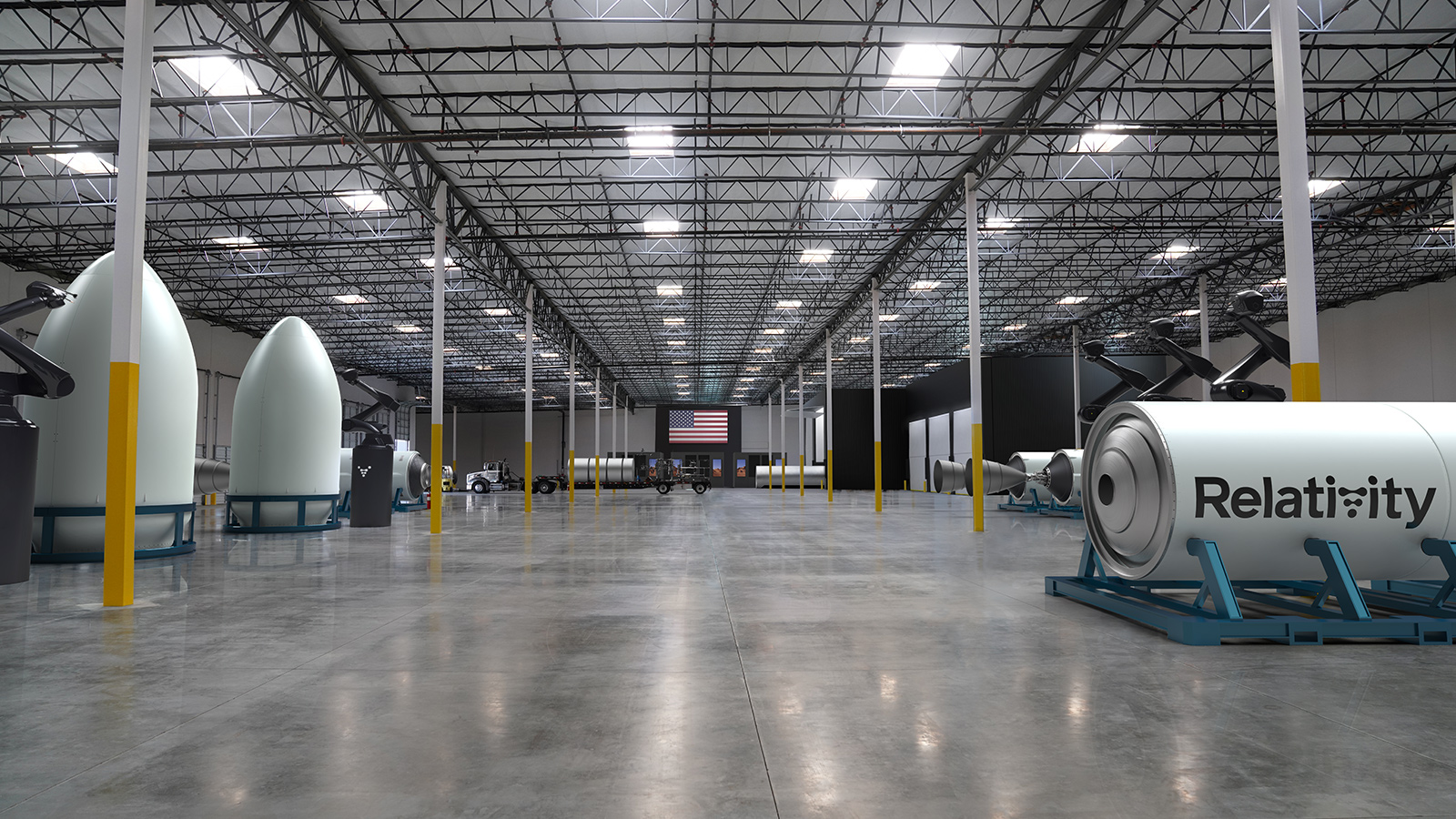Stay Up to Date
Submit your email address to receive the latest industry and Aerospace America news.
Step is driven by need to 3D-print rocket components
Launch vehicle startup Relativity Space announced Friday it will relocate its headquarters and production to Long Beach, California, to prepare for the first launch of its Terran 1 expendable rocket.
At 11,000 square meters, the new headquarters has roughly five times the space as the company’s Los Angeles offices 30 kilometers away, where production of the first Terran 1 vehicle is already underway. Terran 1 will launch one or more satellites collectively weighing up to 1,250 kilograms into low-Earth orbit. The rocket’s first flight is scheduled for early 2021.
The move will help Relativity finish building the first Terran 1 and “ramp up the production rate” for future vehicles, said David Giger, vice president of launch development at Relativity, in an interview. “This is an opportunity to get everyone under one roof and also enable a bunch of additional capabilities.”
These additions include a dozen of the company’s Stargate 3D printers, designed and built in-house. About 95% of the parts on Terran 1 will be made this way in a strategy to drastically reduce costs, Giger said.
It’s also an approach that requires a lot of space. Parts for the rocket will be built vertically by a robotic arm on each 9-meter-tall printer that deposits a stream of liquid metal alloy in layers.
The tall bay ceiling in the new Long Beach headquarters is “about twice as high as what we currently have available to us,” Giger said. “What that really enables us is to print the large elements of the rocket in one piece.”
Contrast that with the LA factory, which has room for only six of the Stargate printers that must print the larger parts for Terran 1 in sections and then connect them horizontally. Some parts, including the planned 3-meter-tall payload fairing, are too large to be made in the old factory.
Production in the new facility is scheduled to start in May, and the plan is to make that shift gradually over the next few months so “there’s a very seamless transition to where we’re printing parts in the new factory and we can slowly start stopping to print parts here,” Giger said. Once operational, Relativity aims to build a rocket from raw material to flight in 60 days.
From there, the first Terran 1 will be fully assembled and shipped to Florida. Relativity has an agreement with the U.S. Air Force to use Launch Complex 16, a long-dormant pad at Cape Canaveral Air Force Station once used for tests of the Titan missiles.
Long term, the company’s ambitions lie beyond low-Earth orbit. Relativity hopes to one day 3D-print a rocket on Mars, which Giger said will be possible by the mid-2030s, the general goal cited by NASA and others for a human mission to the red planet.
“We want to be one of many companies doing our part to enable that future exploration, but we’re very much focused on once we get there, how do we enable rapid development through additive manufacturing, through autonomous additive manufacturing on Mars to enable whatever capabilities are needed there,” he said.
But for now, he said, the new headquarters is an “incremental step there.”
About cat hofacker
Cat helps guide our coverage and keeps production of the print magazine on schedule. She became associate editor in 2021 after two years as our staff reporter. Cat joined us in 2019 after covering the 2018 congressional midterm elections as an intern for USA Today.
Related Posts
Stay Up to Date
Submit your email address to receive the latest industry and Aerospace America news.





